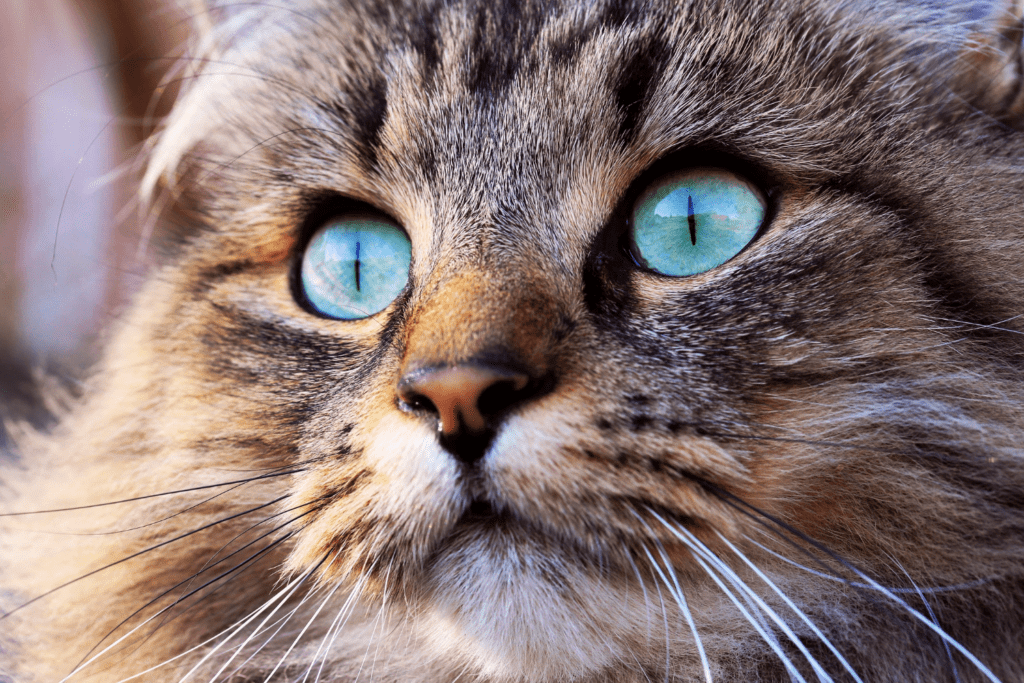Norwegian Forest Cat: How to Choose the Perfect One

This post may contain affiliate links, which means I’ll receive a commission if you purchase through my link, at NO EXTRA COST TO YOU
Norwegian Forest Cats are a majestic and friendly breed known for their striking appearance and robust health. Choosing a Norwegian Forest Cat involves more than just admiring their beautiful looks; it requires careful consideration of their needs, characteristics, and your lifestyle. Here’s a detailed guide to help you make an informed decision when selecting a Norwegian Forest Cat.
1. Understanding the Breed
Breed Characteristics:
- Appearance: Norwegian Forest Cats are known for their large size, dense double coat, tufted ears, and bushy tail. They have a sturdy build suited for cold climates.
- Temperament: They are typically friendly, social, and adaptable, making them excellent family pets. They enjoy interaction but also appreciate their own space.
Lifestyle Compatibility:
- Family Dynamics: Consider how a Norwegian Forest Cat will fit into your family dynamic, including interactions with children and other pets.
- Activity Level: They are moderately active and enjoy climbing and exploring, so ensure you can provide an engaging environment.
2. Finding a Reputable Breeder
Research Breeders:
- Reputation: Look for breeders with a good reputation in the Norwegian Forest Cat community. Check reviews, ask for recommendations, and visit breeder websites.
- Standards and Ethics: Choose breeders who adhere to ethical breeding practices, prioritize the health and well-being of their cats, and follow breed standards.
Health Testing:
- Genetic Screening: Reputable breeders conduct genetic testing for common hereditary conditions, such as Hypertrophic Cardiomyopathy (HCM) and Glycogen Storage Disease IV (GSD IV).
- Health Records: Ensure that the breeder provides health records for the kittens and their parents.
Visit the Breeder:
- Environment: Visit the breeder’s facilities to see the living conditions of the cats and kittens. The environment should be clean, spacious, and stimulating.
- Interaction: Observe how the cats are treated and interact with the breeder to assess their commitment to animal welfare.
3. Evaluating Kittens
Appearance:
- Health Indicators: Look for kittens with clear eyes, clean ears, and a healthy coat. Avoid kittens with signs of illness, such as lethargy or nasal discharge.
- Temperament: Spend time with the kittens to assess their personalities. Norwegian Forest Cats are typically friendly and curious, so look for signs of social behavior.
Socialization:
- Behavior: Well-socialized kittens should be comfortable with human interaction and other animals. Ask the breeder about the socialization practices used.
Documentation:
- Pedigree and Registration: Ensure that the kitten comes with proper documentation, including pedigree information and registration papers from a recognized cat registry.
4. Preparing Your Home
Cat-Proofing:
- Safety: Remove potential hazards such as toxic plants, small objects, and chemicals. Secure windows and ensure that the environment is safe for exploration.
- Comfort: Set up a comfortable space for your new kitten, including bedding, a litter box, food and water bowls, and toys.
Supplies:
- Essential Items: Gather necessary supplies such as a scratching post, cat carrier, food and water dishes, and grooming tools.
5. Transitioning Your New Cat
Adjustment Period:
- Introduction: Allow your Norwegian Forest Cat to acclimate to their new home gradually. Provide a quiet, comfortable space where they can feel secure.
- Routine: Establish a consistent routine for feeding, playtime, and grooming to help your cat adjust to their new environment.
Veterinary Care:
- Initial Checkup: Schedule a veterinary checkup shortly after bringing your new cat home to ensure their health and address any concerns.
- Vaccinations and Preventive Care: Follow your vet’s recommendations for vaccinations, deworming, and preventive care.
6. Understanding the Commitment
Long-Term Care:
- Lifespan: Norwegian Forest Cats have a lifespan of 12-16 years, so be prepared for a long-term commitment.
- Ongoing Care: Regular grooming, veterinary visits, and a balanced diet are essential for maintaining their health and well-being.
Lifestyle Fit:
- Daily Interaction: Ensure that you have the time and resources to meet your cat’s social, physical, and emotional needs.
- Financial Responsibility: Consider the costs associated with owning a Norwegian Forest Cat, including food, grooming, veterinary care, and other expenses.
Conclusion
Choosing a Norwegian Forest Cat involves understanding the breed’s characteristics, finding a reputable breeder, evaluating kittens, preparing your home, and committing to their long-term care. By following these guidelines, you can ensure that you select a healthy, happy Norwegian Forest Cat that will thrive in your home and become a beloved member of your family. With proper preparation and care, your Norwegian Forest Cat will provide years of joy and companionship.

© Copyright 2024. All rights reserved.





